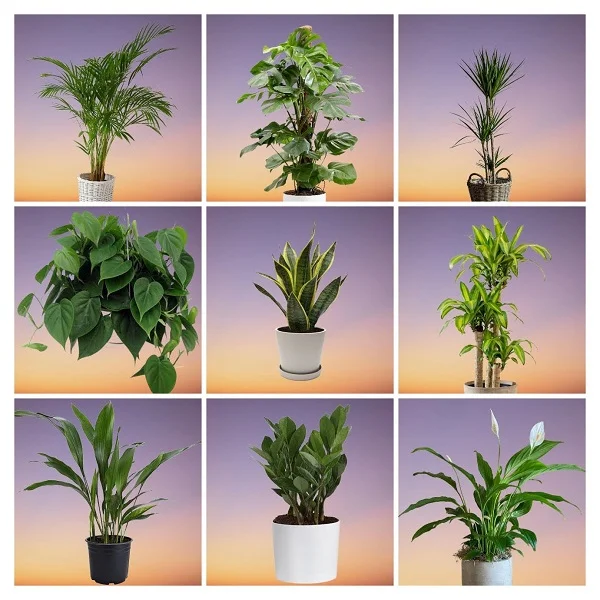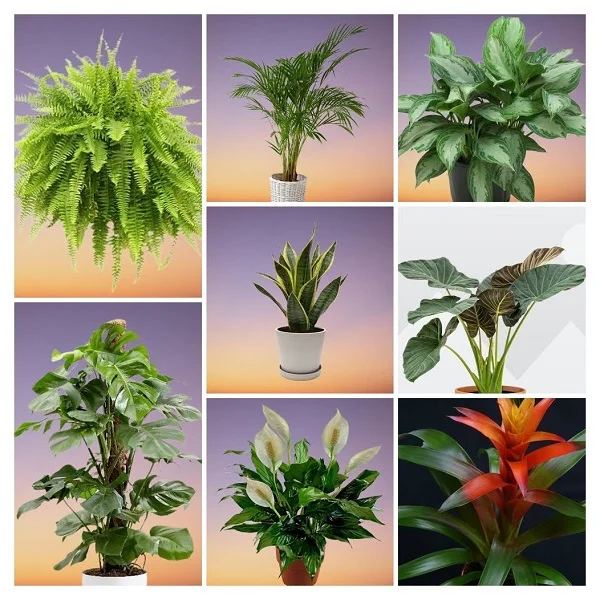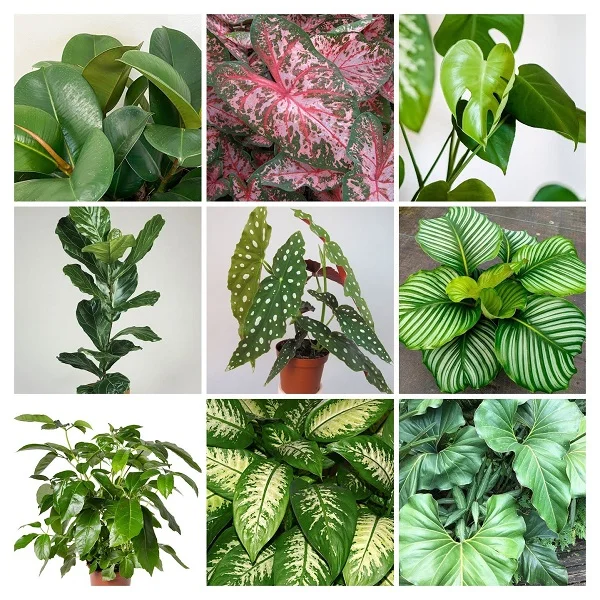Philodendron 'Summer Glory' Indoor Care and Propagation Guide
Some links in this post may be affiliate links
Philodendron 'Summer Glory' blossoms in bright indirect light, warm and humid conditions and moderately moist, rich, well-drained soils coupled with monthly feeding in the growing season.
Philodendron 'Summer Glory' is a stunning plant that captivates houseplant lovers with its vibrant foliage, easy-care nature, and rapid growth. This tropical beauty thrives indoors with minimal effort, making it an ideal choice for both beginners and seasoned plant enthusiasts.
Philodendron 'Summer Glory' is one of the hybrid Philodendron varieties with an upright, clumping growth and large, deeply-veined leaves which start off reddish-bronze and turn deep green as they mature.
The young leaves are surrounded by red catapylls. Venation in young leaves is purplish-pink but fades with age. The deep-green mature leaves have a red leaf margin.
Philodendron 'Summer Glory' and its relatives Philodendron selloum (Lacy Tree Philodendron) and Philodendron selloum 'Sun Red' are non-climbing, upright bushes which are magnificent in a pot. Use a moss stick to give it support and to grow the large beautiful leaves. These plants are among the best tropical foliage plants for the home, office and other spaces.

Botanical name: Philodendron 'Summer Glory'
Family: Araceae
Common name: Summer Glory Philodendron
Origin
Philodendron 'Summer Glory' is a patented hybrid by LariAnn of Aroidia Research between an unnamed Bob McColley Philodendron (female plant) and Philodendron gloriosum (male plant). It is a rare Philodendron developed in 2016 and reproduced in 2020 through tissue culture.
Toxicity
Like other Philodendrons, Philodendron 'Summer Glory' is toxic to both humans and pets as indicated by National Capital Poison Center. The plants contain Calcium oxalate crystals. If ingested, it can cause burning and swelling in the mouth and throat, vomiting, diarrhea and abdominal pains. Therefore, keep the plant away from the reach of children and pets.
Where to buy
Are you looking to add Philodendron 'Summer Glory' to your collection? You may acquire these plants online from Etsy (Link to Etsy) or from Amazon (Link to Amazon).
Philodendron 'Summer Glory' Care Indoors
Philodendron 'Summer Glory' flourishes in bright indirect light (filtered light), average warmth of 18-260C, above average humidity of 60-70% and moderately moist, fertile, well-drained, all purpose potting soils coupled with monthly feeding during the growing season.
It requires regular pruning to keep the plant neat, to encourage a compact, bushy growth and to rejuvenate growth. Repotting for the young plant is needed when it becomes pot-bound and the soil should be replenished annually for the large plants. Keep reading for more on these growing conditions and how to achieve them.
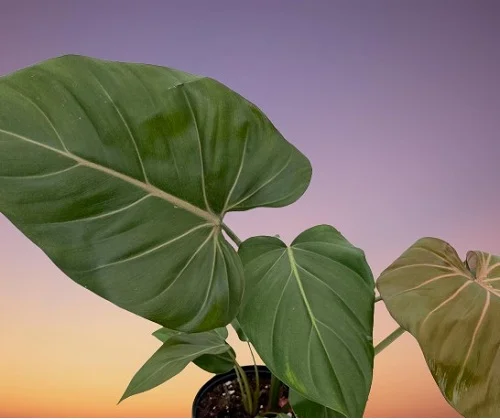
Light Requirements
Philodendron 'Summer Glory' grows best in bright indirect light. Keep it away from direct sunlight to avoid scorching the leaves.
Ensure that the plant receives adequate light as insufficient light will result in leggy growth, small-sized pale leaves and loss of leaf coloration.
If the natural lighting is inadequate, you may grow your Philodendron 'Summer Glory' under a grow light to supplement it.
For uniform growth and to avoid leggy growth, turn the pot regularly to ensure that the plant receives light on all sides.
Watering
Water your Philodendron 'Summer Glory' liberally during the growing season while allowing the top 2-3 inches of soil to dry out between waterings.
Decrease the amount and frequency of watering during the cold season as growth is minimal at this time. Use water that is at room temperature to avoid shocking this tropical plant.
To avoid soggy soil, ensure that the pot has a drainage hole. Soggy soil can lead to root-rot and eventual loss of the plant.
Temperature and Humidity
Philodendron 'Summer Glory' thrives in average warmth within the range of 18-260C. Keep it away from cold and hot drafts to prevent extreme temperatures. Very high temperatures may cause yellowing and leaf drop while too low temperatures can result in reduced growth or even death of the plant.
Philodendron 'Summer Glory' requires above average humidity of 60-70% to thrive. Low humidity for prolonged periods can result in curled leaves and brown leaf tips and edges. To elevate humidity, set the pot on a wet pebble tray or use a cool mist humidifier.
Regularly clean the leaves by damp-wiping with a soft cloth to get rid of dust and to discourage pest infestation. Maintain good air circulation to minimize fungal diseases.
Fertilizer (Feeding)
Feed Philodendron 'Summer Glory' every 4 weeks during the growing season with a balanced, water-soluble fertilizer. Do not feed in the cold season as growth is minimal at this time. Feeding at this time can cause fertilizer burn and death of the plant.
Potting Mix
The best potting mix for Philodendron 'Summer Glory' should be rich in organic matter and well-draining to prevent it from getting soggy while providing the required nutrients. Most all purpose potting mixes are ideal for this plant.
Repotting
Repot Philodendron 'Summer Glory' at the beginning of the growing season when the plant becomes root-bound. Use a pot that is 2 sizes larger than the current one. Ascertain that the pot has a drainage hole to prevent the soil from getting soggy as it can lead to root-rot. Take a look at these pots with drainage holes and saucer on Amazon.
Replenish the top 2-3 inches of soil of large plants at the beginning of the growing season or as necessary. Take care not to injure the roots to avoid fungal infestations. The large plants can also be divided at repotting to propagate new plants if you need to increase your collection or share with friends and family.
Pruning
Pruning Philodendron 'Summer Glory' involves removal of yellow and dead leaves to maintain the plant neat and also discourage pests and diseases. Cutback the stems of a straggly plant to the soil level at the beginning of the growing season to rejuvenate growth. Learn more on how to prune houseplants.
Propagation
Philodendron 'Summer Glory' propagation can be done during the growing season by plant divison.
How to propagate Philodendron 'Summer Glory' by plant division
Water the Philodendron 'Summer Glory' thoroughly at least 1 day before to make it easier to divide and also hasten establishment as a well hydrated plant suffers less shock and takes a shorter time to take root.
Carefully slip a large Philodendron 'Summer Glory' out of its pot and divide it into sections while ensuring that each section has enough roots.
Pot these sections into individual pots in moist, loose, well-drained soil and place the set up in a warm, brightly-lit place and maintain the soil moist.
Allow adequate time for the new Philodendron 'Summer Glory' to be established after which you can begin routine care.
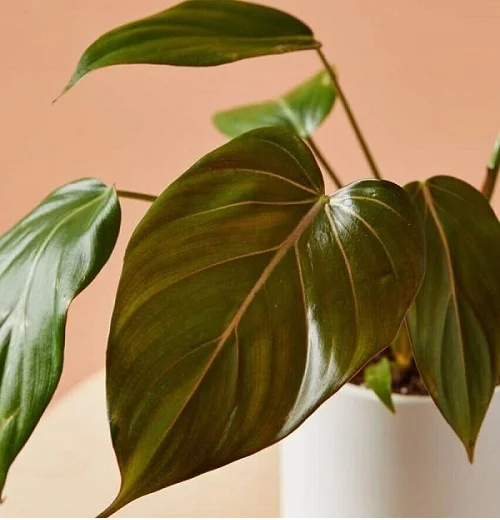
Philodendron 'Summer Glory' Problems
The main growing problems in Philodendron 'Summer Glory' are yellow leaves, loss of leaf color, drooping leaves, brown leaf tips and edges, rotting, pests and diseases among others. Keep reading for more on these problems and how to fix them.
Yellow leaves
If many leaves are affected and there are signs of wilting and rotting, overwatering is the cause of yellow leaves in Philodendron 'Summer Glory'. Take care not to overwater. Water the plant liberally during the growing season while allowing the top 2-3 inches of soil to dry out between waterings.
Reduce the amount and frequency of watering during the cold season to maintain the soil barely moist. To avoid soggy soil, ensure that the pot has a drainage hole and that the soil is free-draining (drains easily).
If there is no wilting and rotting, underfeeding is the cause of yellow leaves in Philodendron 'Summer Glory'. Feed the plant every 4 weeks during the growing season with a balanced water-soluble fertilizer but do not feed during the cold season to avoid fertilizer burn.
If only lower leaves are affected and have dark spots and new leaves are dark and small, then underwatering is the cause of yellow leaves.
To fix the problem, water the plant liberally during the growing season while allowing the top 2-3 inches of soil to dry out between waterings. Lessen watering during the cold season but never allow the soil to dry out completely.
If leaves are pale colored and have straw-colored patches the cause of yellow leaves is exposure to direct sunlight. Protect or keep the plant away from direct sunlight as it cannot withstand direct sunlight.
Related: 15 Causes of Yellow Leaves in Indoor Plants and Their Fixes
Pests
The common pests in Philodendron 'Summer Glory' are Mealybugs, Scales and Aphids. Isolate the affected plant to prevent spread to other plants and treat it with neem oil or insecticidal soap. Make sure to follow the manufacturer's instructions.
Diseases
Philodendron 'Summer Glory' is prone to powdery mildew and leaf spot disease which are enhanced by overwet conditions coupled with poor air circulation. Isolate the affected plant to prevent spread to the rest of the plants and spray it with a fungicidal solution as indicated by the manufacturer. Ensure to cover the entire plant; the leaves and the stems.
To prevent future infestation, avoid wetting the foliage and water from the bottom instead. Ensure that there is good air circulation for the plant to discourage these diseases.
Loss of leaf color
Too little light is the cause of loss of leaf color in Philodendron 'Summer Glory' as it requires bright, indirect light to develop the beautiful leaf color. If light is inadequate the leaves turn all-green. Move the plant to a brighter spot where it will receive bright indirect light or instal a grow light if the natural light is not enough. Check out this guide on understanding light for houseplants.
Brown leaf tips and edges
There are two possible causes of brown leaf tips and edges in Philodendron 'Summer Glory'. One possible cause of brown leaf tips and edges is dry air (low air humidity). To fix this problem, set the pot on a wet pebble tray or use a cool mist humidifier to increase humidity for the plant.
The second possible cause of brown leaf tips and edges in Philodendron 'Summer Glory' is that the plant is pot-bound. Repot the plant into a pot 2 sizes larger. Ensure that the pot has a drainage hole to prevent the soil from getting soggy.
Drooping leaves
Drooping leaves in Philodendron 'Summer Glory' are due to three possible reasons. One possible cause of drooping leaves is incorrect watering; either underwatering or overwatering.
Check the condition of the soil by inserting 2-3 inches of your forefinger in the soil and feel the soil between your fingers. If the soil feels dry, water the plant immediately and it should recover. If the soil feels wet, withhold watering until the top 2-3 inches of soil feel dry.
To prevent this problem in the future, water the plant liberally during the growing season while allowing the top 2-3 inches of soil to dry out between waterings. Decrease watering during the cold season but never allow the soil to dry out completely. In addition, ensure that the pot has a drainage hole and that the soil is well-drained. Learn more on how to water houseplants the correct way.
The second possible cause of drooping leaves is too high temperatures due to hot drafts. Philodendron 'Summer Glory' grows best in average warmth of 18-260C. Protect it from hot drafts from hot air vents, heat sources and others. Check out this guide on understanding temperature for houseplants.
The third possible cause of drooping leaves in Philodendron 'Summer Glory' is pests infestations. These sap sucking pests will cause the leaves to loose their stiffness and begin to droop. Regularly inspect the plant for any infestation and treat it appropriately for these pests.
Leggy growth and small pale leaves
Too little light is the cause of leggy growth and small pale leaves as Philodendron 'Summer Glory' will not thrive in shade. Move the plant to a more brighter spot where it will receive bright indirect light or instal grow lights where natural light is inadequate.
Final Thoughts
Philodendron 'Summer Glory' is a rewarding indoor plant that adds a tropical feel to any space. With the right care, it will thrive for years, providing lush, vibrant foliage. Follow these care and propagation tips, and enjoy the beauty of this striking plant in your home.
Frequently Asked Questions
1. Can Philodendron 'Summer Glory' survive in low light?
Yes, but its growth may slow down. Place it near a brightly lit window where it will receive bright indirect light or use a grow light if the natural lighting is not enough.
2. How often should I repot my Philodendron 'Summer Glory'?
Repot Philodendron 'Summer Glory' at the beginning of the growing season every 1–2 years or when the roots outgrow the pot.
3. What’s the best way to increase humidity for this plant?
Use a cool mist humidifier, or place a pebble tray with water under the pot to increase humidity for your Philodendron 'Summer Glory'.
4. Is Philodendron 'Summer Glory' toxic to pets?
Yes, Philodendron 'Summer Glory' contains calcium oxalate crystals that can be harmful if ingested. Keep it out of reach of pets and children.
5. How do I make my Philodendron 'Summer Glory' bushier?
Prune your Philodendron 'Summer Glory' regularly and provide ample indirect light to encourage fuller growth.
6. What’s the biggest mistake to avoid with this plant?
Overwatering is the biggest mistake to avoid for Philodendron 'Summer Glory'. Always check the soil moisture before watering. Do not water on a schedule.
You liked it? Share on social media.
Related Content
Amazon Associates Disclosure
Homeplantsguide.com is a participant in the Amazon Services LLC Associates Program, an affiliate advertising program designed to provide a means for sites to earn advertising fees by advertising and linking to amazon.com.



